The History of Shiny Brite Ornaments
The most popular mid-century Christmas ornaments in the U.S., Shiny Brite glass ornaments still sparkle with collectors throughout the holidays.
Some believe that the true magic of the holiday season can be found in the family Christmas tree, which can create as many memories as the gifts found underneath it.
Ornaments that decorated yesterday’s trees continue to create holiday traditions for today’s families, and for many, this tradition includes glass orbs hanging from branches in bright, shiny colors and sparkly patterns. These colorful glass ornaments are synonymous with American Christmases and chances are the ones used in your family for years are by Shiny Brite, a brand created by German-American immigrant Max Eckardt.
Blown-glass Christmas ornaments with hand-painted accents got their start in the German village of Lauscha in the 1840s; they were made in the shape of fruit and nuts that were hand-blown into molds, and then silvered inside with a special compound of silver nitrate and sugar water. By the 1870s, Lauscha was exporting Christmas ornaments to Britain. American retail giant, F.W. Woolworth, took notice, and seeing the business potential, began importing the magical orbs to sell to families across the U.S.
As a native of a small village near Lauscha, Eckhardt knew the appeal of glass ornaments and also saw their potential in the American market. Like Woolworth, he had been importing hand-blown glass balls from his homeland since the early 1900s. He had the foresight to anticipate a disruption in his supply of glass from Germany from the upcoming World War II and in 1937, he established the Shiny Brite Company in New York. The inspiration for the name came from the fact that the insides of the ornaments were coated with silver nitrate so they would stay shiny and “brite” season after season.
To keep his company afloat, Eckardt sought the help of New York’s Corning Glass Company, with the promise that Woolworth would place a large order if Corning could modify its glass ribbon machine, which made light bulbs, to produce the ornaments. This machine, built in 1926, produced 2,000 light bulbs per minute. The switchover was a success, and Woolworth’s ordered more than 235,000 ornaments; in December 1939, the first machine-made batch was shipped to its Five-and-Ten-Cent Stores,where they sold for two to ten cents each.
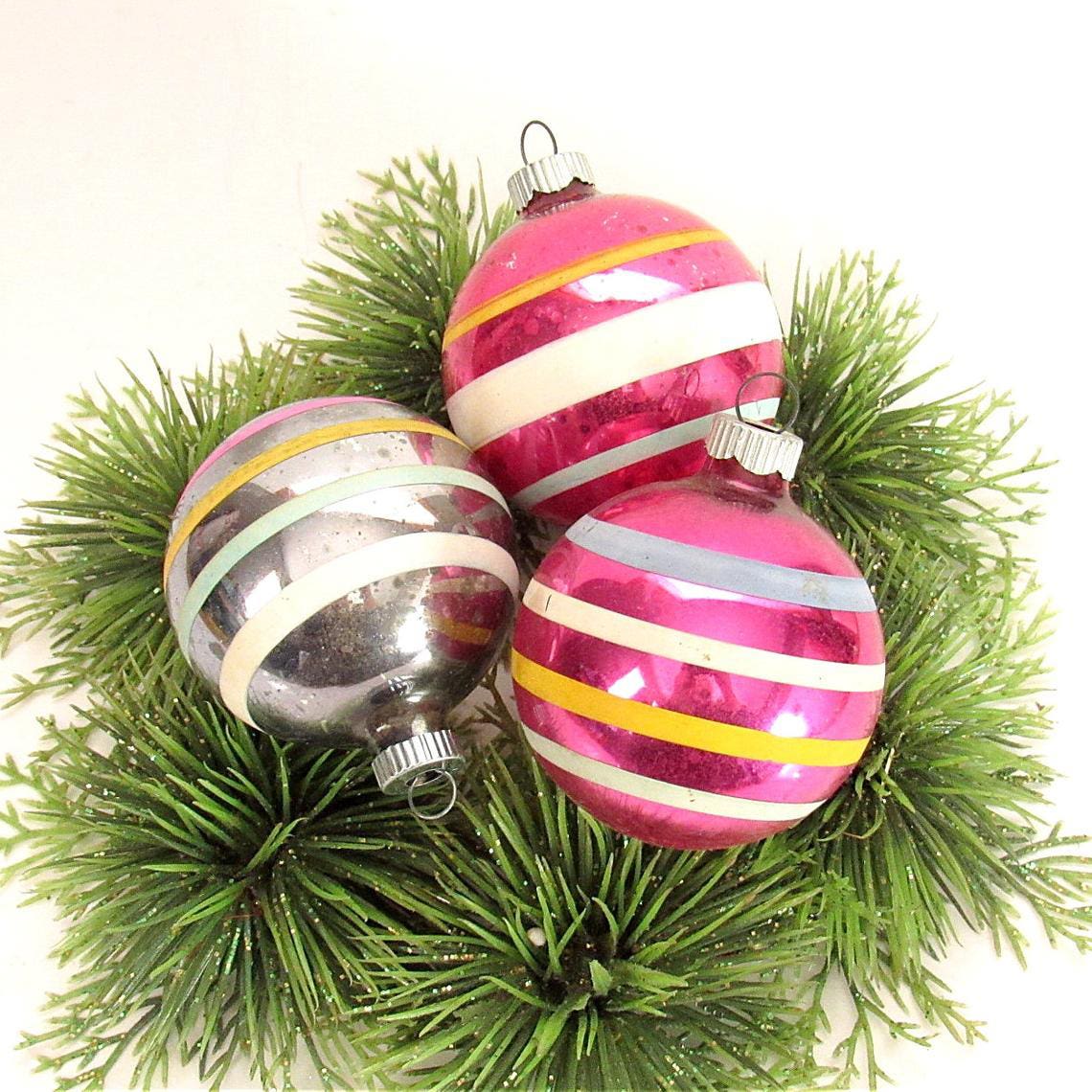
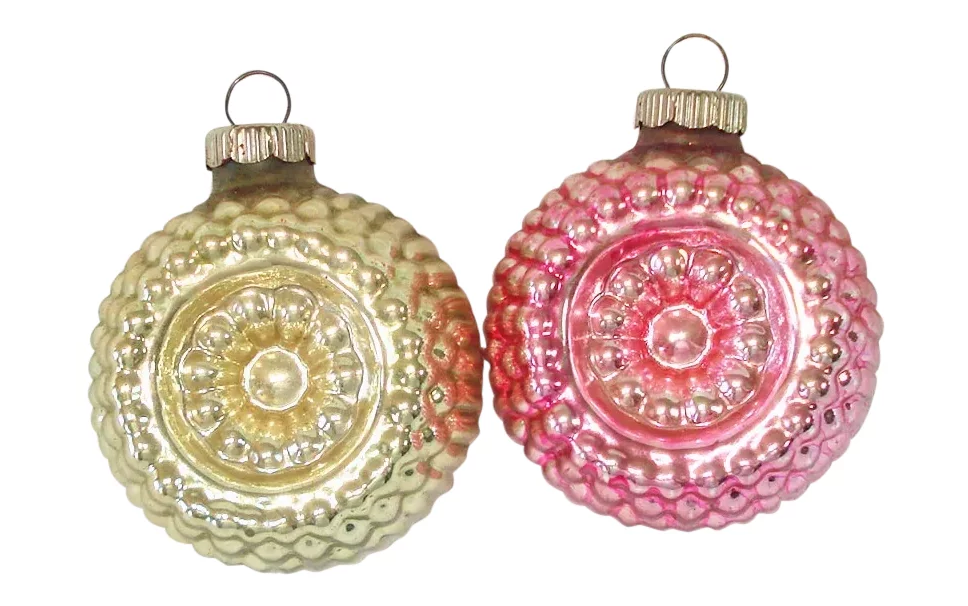
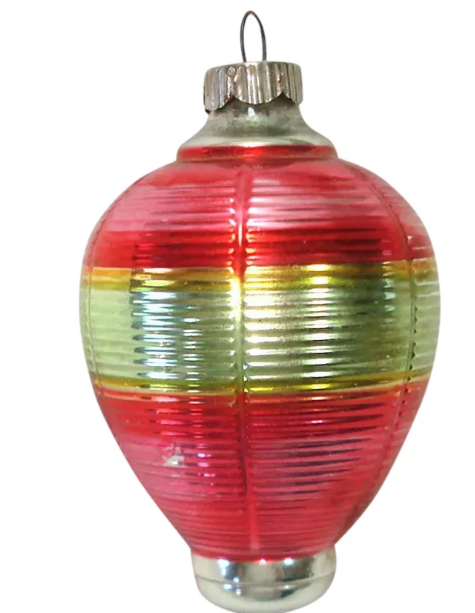
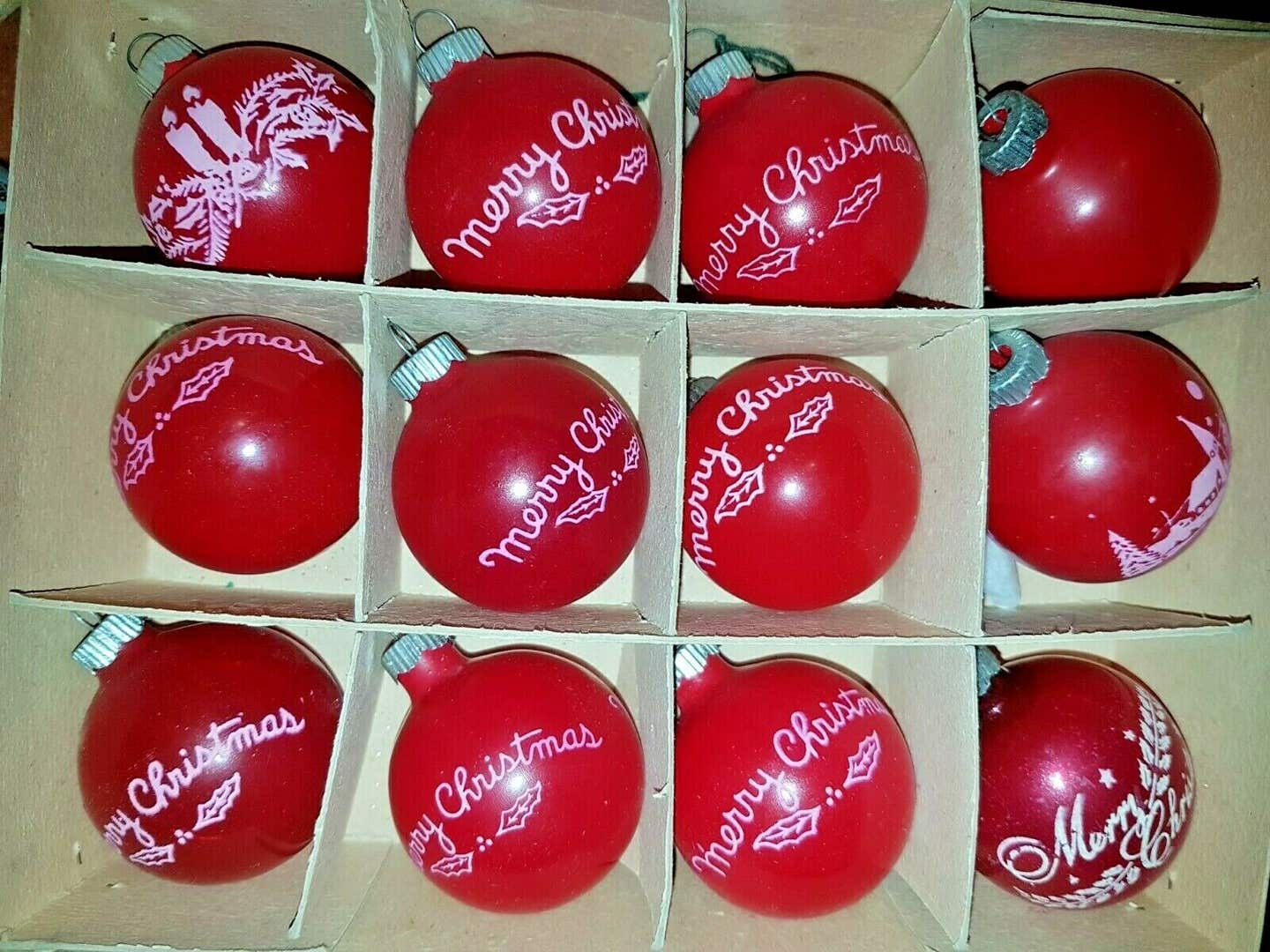
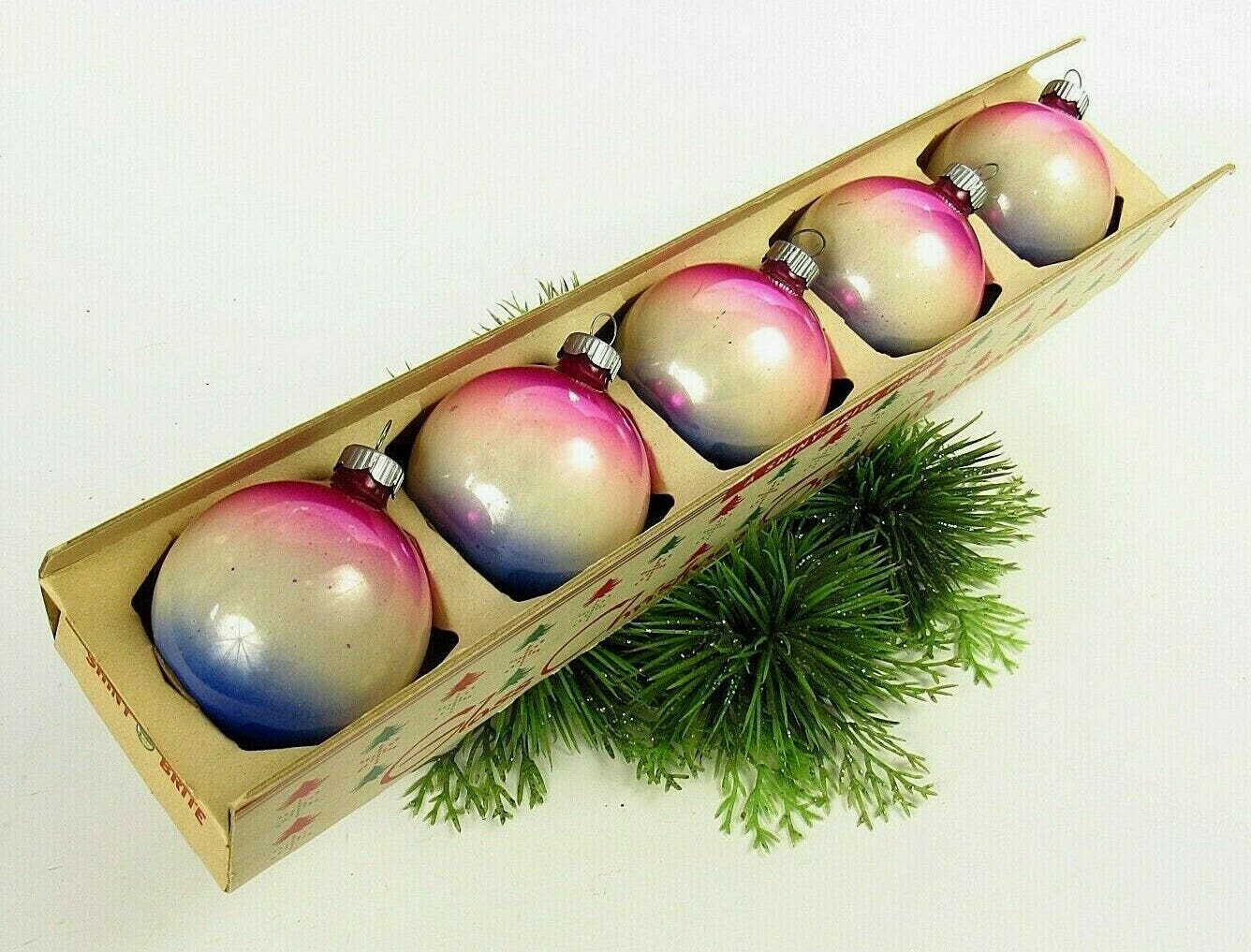
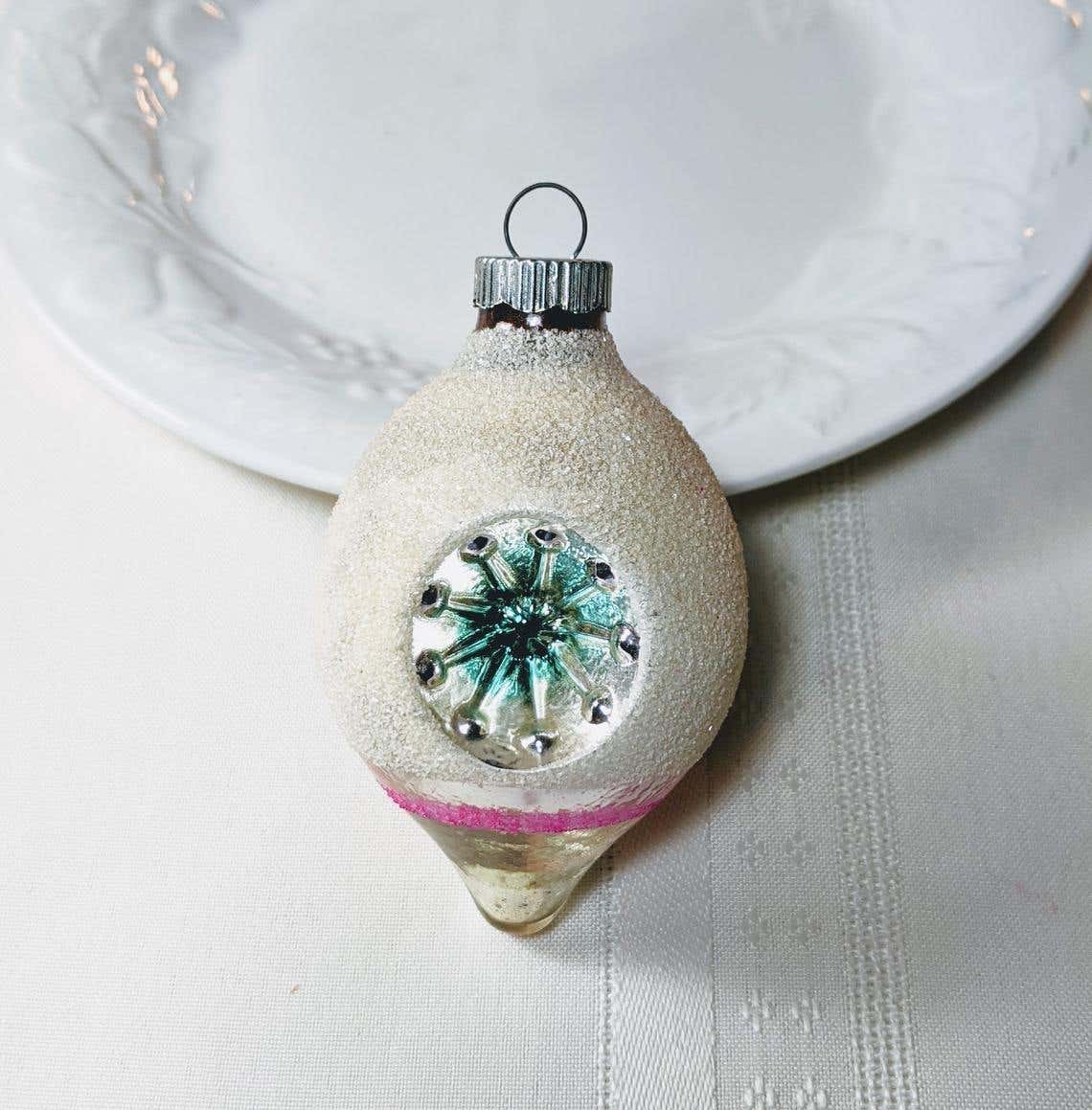
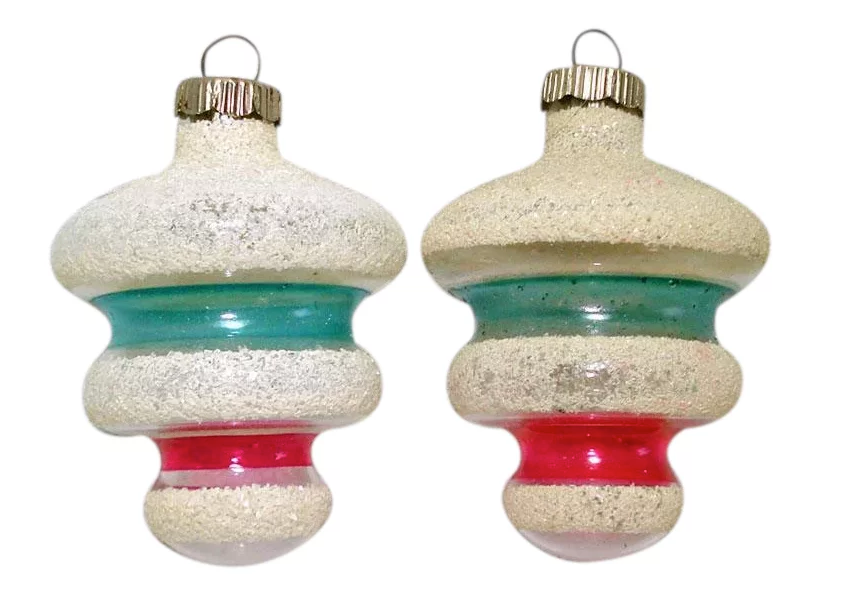
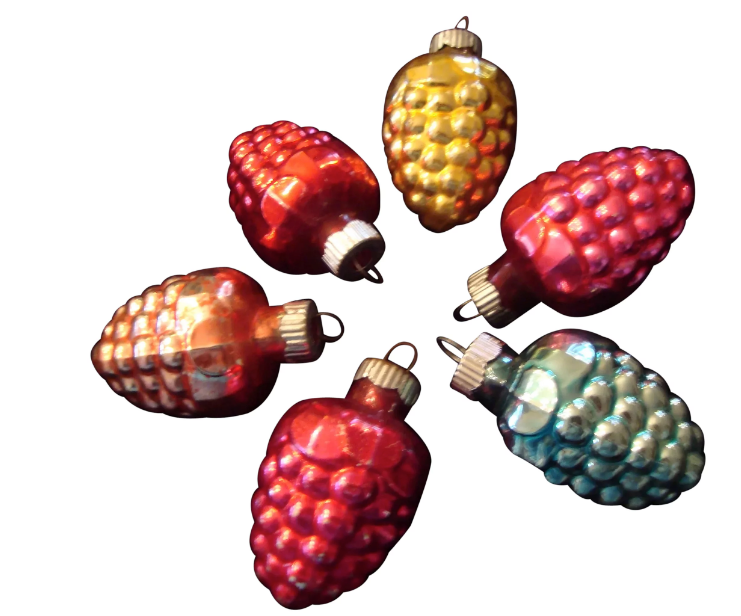
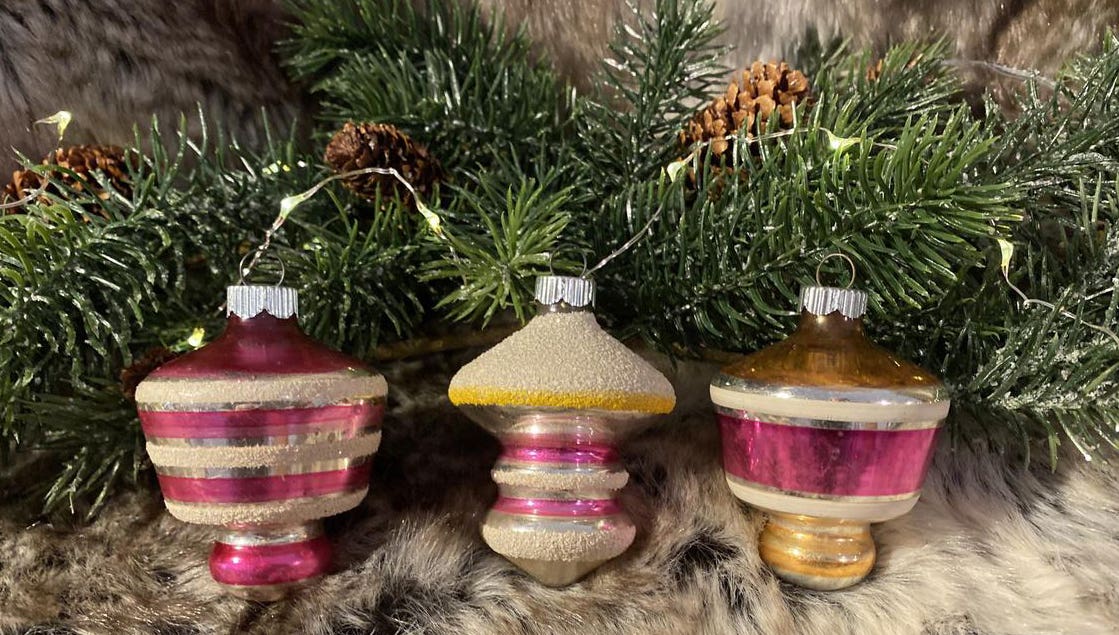
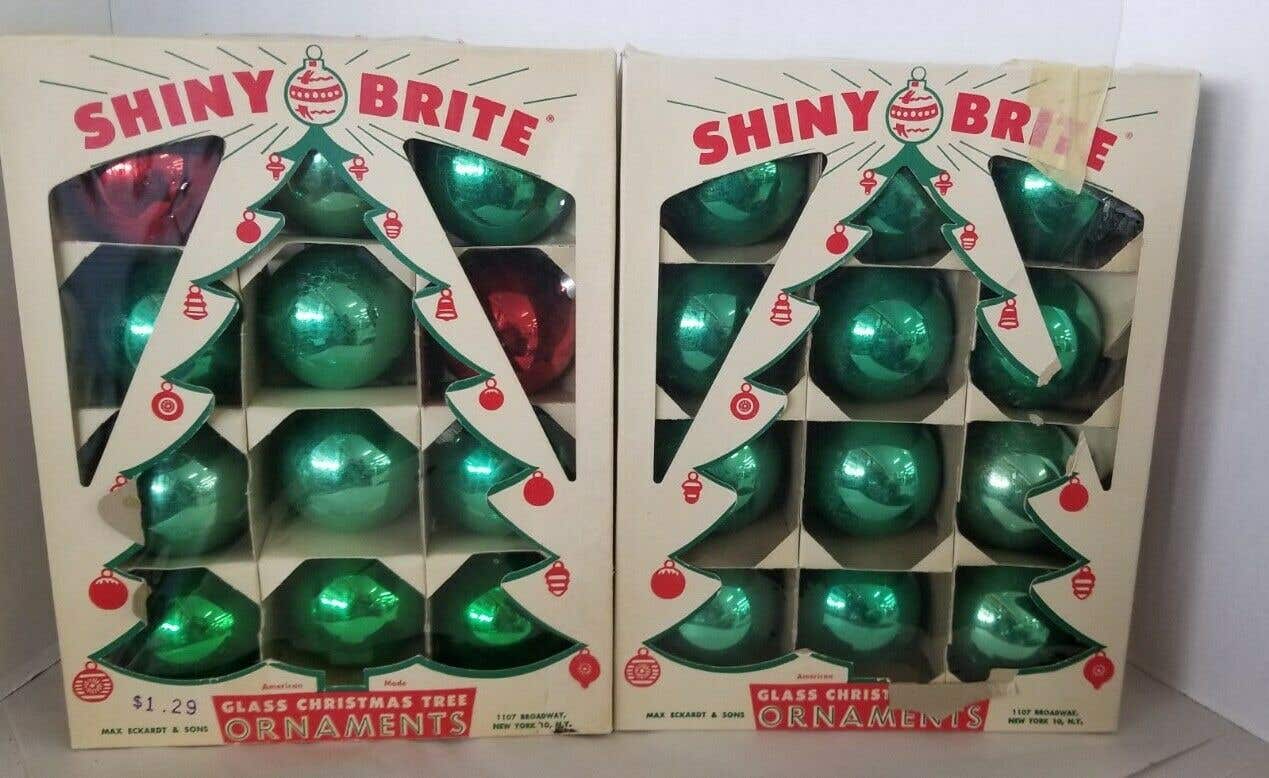
By 1940, Corning was producing about 300,000 unadorned ornaments per day, sending the clear glass balls to outside artists, including those at Max Eckardt’s factories, for hand decoration. The ornaments were lined with silver nitrate, run through a lacquer bath, decorated by Eckardt’s employees, and then packaged in brown cardboard boxes. According to a LIFE magazine article from December 1940, Corning Glass Works expected to produce 40,000,000 ornaments by the end of that year and supply 100 percent of the domestic market for ornaments.
The ornaments were originally just a simple silver, but eventually Eckardt produced them in a large variety of colors: classic red (the most popular ornament color in the 1940s), green, gold, pink and blue, both in solids and stripes. They were also offered in a variety of shapes besides balls including tops, bells, icicles, teardrops, trees, finials, pine cones, and Japanese lanterns and reflectors. Some were also decorated with mica “snow.”
Shiny Brite ornaments were the most popular in the United States throughout the 1940s and 1950s. The fact that they were an American-made product was stressed as a selling point during the war, and the front of original 1940s’ boxes features Uncle Sam shaking hands with Santa.
According to Blue Moon Estate Sales, Shiny Brites can be dated and the styles differentiated by checking the topper and the decorations as follows:
Late 1930s: silver-tone metal toppers; orbs and shapes; hand-decorated clear and colored glass; silver nitrate coated interiors; spheres, Americanized Santa shapes and early Art Deco styles.
Early 1940s: spheres, bells, pyramids, reflectors, pine cones, acorns, oblongs and diamond shapes; metal cap toppers; hand-decorated exteriors.
WWII-era: cardboard and paper toppers with yarn hangs; “non-silvered” transparent orbs with tinsel inside; “non-silvered” transparent or opaque orbs with simple, pastel hand-painting; boxes often featured Santa shaking hands with Uncle Sam.
1950s: colorful orbs and shapes; silver nitrate coated interiors; machine-decorated; crimped, scalloped metal toppers marked “Made in U.S.A.” and “Shiny Brite.”
Corning continued to crank out Shiny Brite ornaments, and by the 1950s, production reached a rate of 1,000 per minute; machines also painted the ornaments at that time. The 1950s was the Shiny Brite heyday, with Eckardt operating four New Jersey factories to keep pace with the demand.
Shiny Brite ornaments dangled from trees through the early 1960s, until plastic ornaments became more popular. But over the years, vintage Shiny Brites have remained popular with collectors for their beauty and nostalgia, and acting as a sort of time capsule of American holiday history. They are some of the most sought after vintage ornaments from the mid-century and are the perfect accessory for space-age aluminum trees.
Thanks to their mass appeal during the ’40s and ’50s, today they can be found at online sites including Ruby Lane.com, Etsy.com and eBay.com, as well as estate sales, antiques malls, thrift stores, yard sales and flea markets. Prices of Shiny Brite ornaments depend on quality, age and rarity. Individual ornaments have been selling online ranging from $5 to $89. Original boxes of six ornaments are being sold between $10 to $100, while boxed sets of 12 have been going between $15 to $250. Larger lots of multiple boxes can sell for more than $500. Shiny Brite tree toppers have been selling for $7 to $127. The best time for collectors to keep an eye out for Shiny Brite ornaments is pretty much all year long, especially in the heat of summer, when visions of sugar plums usually aren’t dancing in the heads of fellow treasure hunters.
In the late 1990s, designer Christopher Radko revived the Shiny Brite name, and began selling reproductions of the most popular original ornaments in 2001. These reproductions are beautiful ornaments in their own right, but if you are searching for authentic vintage Shiny Brites, pay close attention to make sure you’re not buying any of these reproductions.








